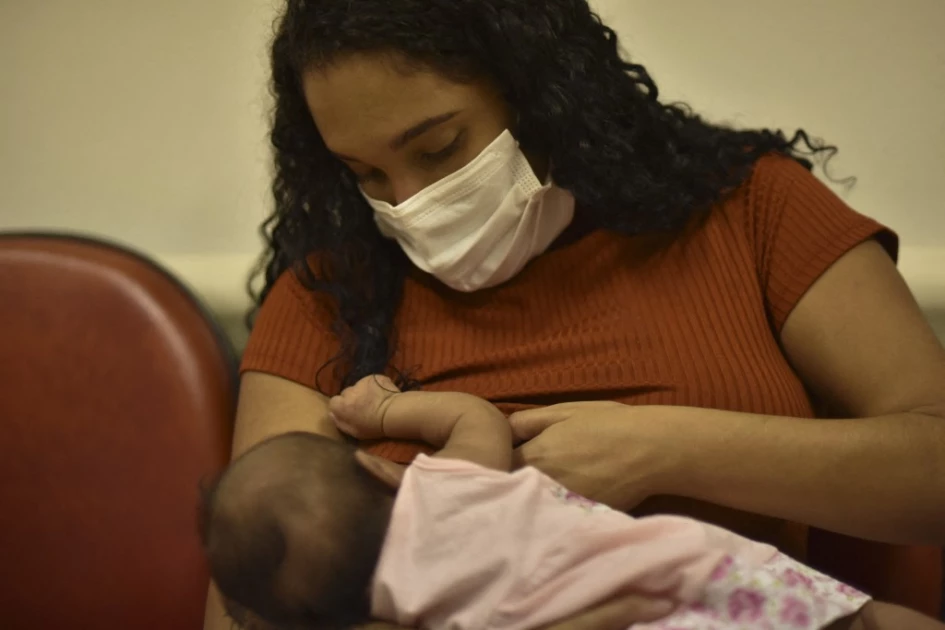More than milk: Why early breastfeeding saves lives

A woman breastfeeds her baby. (Photo by AFP)

Audio By Carbonatix
Did you
know that over 60 percent of mothers stop breastfeeding earlier than they
intended, while another 68 percent may not be breastfeeding using the right
techniques?
The
Ministry of Health (MoH) reports that three out of ten mothers in Kenya don’t
breastfeed their new-borns but rely on bottle-feeding, translating to just 60
percent of exclusive breastfeeding for the first six months.
This puts
the babies at risk of contracting infections and diseases that contribute to
preventable child deaths.
Some
studies report that new mothers experience breastfeeding problems, with half of
these citing latching and feeding issues, including myths and misconceptions,
insufficient milk supply, and cracked nipples.
Some just
lack the necessary information about breastfeeding, lack of social support, as
well as the pressure of ‘bouncing back to the girlie era’ and going back to
work postpartum.
As we wrap
up World Breastfeeding Week, a global campaign held every first week of August,
this is the perfect moment to pause and recognize the strength and patience it
takes to breastfeed in today’s world.
It is also
a moment to learn, unlearn, and relearn a few things surrounding breastfeeding.
This year’s theme being ‘Prioritize Breastfeeding: Create Sustainable Support
Systems’, we create awareness in support of raising healthy babies.
“A new-born
should ideally start breastfeeding within the first hour after being born,
often called the ‘Golden Hour’,” says Dr Nakhumicha Mukhongo, a paediatrics and
child health specialist at the Kenyatta National Hospital (KNH).
“This is
the moment a mother bonds with her child through skin-to-skin contact, and by
putting the baby on the breast, milk production is stimulated, hence improving
long-term breastfeeding success, especially for the first six months before
introducing complementary feeding.”
She says
breastmilk is 80 percent water, and thus, before six months, an exclusively
breastfed baby doesn’t need anything else, contrary to a popular narrative that
mothers ought to give warm water to their babies.
‘BABY’S FIRST
VACCINE’
Dr Mukhongo
further advises that breastmilk is key during the early months of a baby’s life
when major developmental milestones take place, especially brain development, because
it contains antibodies and immune factors that protect the baby against common
infant infections.
“It is
typically like the baby’s first vaccine,” she told Citizen Digital in an interview.
A
breastfeeding guide from the World Health Organization (WHO) shows that common
childhood diseases like pneumonia, respiratory tract infections, middle-ear
infections, allergies, type 1 and 2
diabetes, among other child-related complications, can be avoided by exclusive
breastfeeding because of the highly nutritious colostrum produced by the
mother.
The
colostrum contains immunoglobulin A (IgA) that fights bacteria and infections.
WHO recommends that mothers continue breastfeeding up to two years after
the first six exclusive months.
The United
Nations Children’s Fund (UNICEF) calls upon governments, health practitioners, and employers to invest in high-quality breastfeeding support by integrating
breastfeeding counselling and support into routine mother-child health
services, including antenatal, delivery, and postnatal care.
Dr Mukhongo
points out that a mother should attend all the prenatal and postnatal clinics
because these are the sessions that health care providers use to educate
mothers about issues on breastfeeding, including advice on highly nutritious
foods that stimulate milk production.
“We also
need to know that breastfeeding is a technique and it starts from the mind”,
she emphasizes, giving her own experience as a mother. “I am a mother of four.
But I can confidently say that I knew how to properly breastfeed, after giving
birth to my third child. It took me being a medical doctor to learn. I didn’t
have much milk production with my first two babies, or so I thought. But I
later on realized that it was all about how I did it.”
BREASTFEEDING
TECHNIQUES
There’s a
way a mother needs to latch the baby during breastfeeding so that both are
relaxed.
The mother
should be seated in a comfortable position, supporting her back. Don’t
over-dress or over-cover the baby in a way that there is no skin-to-skin
contact. Direct contact stimulates milk production.
“Don’t
nipple-feed the baby; breastfeed them. This means that the baby’s mouth should
cover more of the areola (the dark breast area), not just the nipple. Ensure
that there’s no clicking sounds when the baby is feeding; instead, you should
hear them swallowing the milk,” Mukhongo explains.
“Additionally,
burp the baby by holding them upright against your shoulder, to help release
swallowed air.”
The baby
should be fed regularly, on demand. Regular breastfeeding creates demand for
more milk, hence more production that will be enough for the baby.
A nursing
mother, Dr Mukhongo says, should eat a balanced diet and incorporate more
liquids, including soups, milk, porridge, and up to four liters of water in a
day.
“Eat for
one, drink for two”, the paediatrician advises, adding that a baby should be
breastfed for 20 to 30 minutes of active feeding, with a two-to-three-hour break in between.
Additionally,
one is advised not to train their baby to sleep throughout the night, but to wake
them up and breastfeed them. Sleeping more doesn’t mean the baby is well-fed; it could as well mean the baby is hungry and ‘too tired’ to wake up.
A well-breastfed new-born should poop three to four times a day, and pee mostly after
every feed.
Less poop
means the baby is not getting enough milk. A mother should be keen to check the
colour of baby poop – it should be yellow, seedy, and soft. Hind milk is stronger
and more nutritious, making baby poop yellow.
Greenish
baby poop means the baby is only being fed on foremilk only, which is 90
percent water. Frequency in poop may vary as the baby grows.
As a
mother, you might not be sure whether or not your baby is getting enough milk.
Make regular trips to well-baby clinics to monitor your baby’s growth and
health.
A steady
increase in weight and height with every clinic visit means your baby is having
enough breastmilk.
Further, Mukhongo
mentions that regular clinic visits often help monitor developmental milestones
and discuss any health issues about your baby.


Leave a Comment